Jiří Pergl, Enterpreneur, Czech Republic
Report Kenya 2010 – 2nd part
19.1 Regions Laikipia and Nanyuki
We set this day aside to visit city magistrates in various areas of Laikipie where are we active. We informed all the mayors of our organization and what we do for the children in their province. We asked for a donation of a piece of land in the southern part Laipikie where they have rain at least once in a while. Why again and why another piece of land? I certainly can’t support a second orphanage. We need this land to grow food – vegetables, grains and beans to support our future children’s home so the operating expenses will be lower. As usual, all the mayors are excited and they will raise the issue at the city council, there should be no problem. By now you know a bit about Kenya from my reports. Unless we hold some official paper we should not get too excited. My gut feeling is that our chances are around 80%.
After some bureaucratic work and after an introduction of OMDC to the mayors (by the way, everybody who wants something from a mayor hast to go through three steps before he stands in front of him – we went almost immediately, without any complicated procedures) we go to visit some other locations where children are really suffering. I will again introduce these five kids to you with my new offering of our long distance adoption program.
Let me give you a small example of what we encounter here. We leave the main road and continue about 10 km inland. No road, we make our way through bushes, mud, dust, potholes that are half a meter deep and countless other obstacles. I nurse our Toyota Prado at 10 km an hour and than we arrive at… something. I have no clue – some wooden boards glued together with mud, grass, and plastic bags instead of a proper roof. Cyrus, who has seen quite a lot, goes inside to record it on video but is immediately back and he is throwing up. Outside we meet the HIV positive mother with a toddler, there is no father. The little girl we want to adopt is at school. We gave the mother a bag with food and went to look for the school. I have never seen any Masai as startled as those we met on our way. Speaking of which – we cover about 2 km in one hour of driving. We finally made it to the local preschool. Fifteen bewildered Masai girls aged between 3 and 4, together with their teacher, stepped out of a derelict shack and must have thought a UFO had landed. They had never seen a car, let alone a white man! So I was giving out sweets to confused children and putting them into their little mouths because their hands were so dirty. I took photos of a little girl named Elishiba Wambui Kairu and I will include her in our adoption program. After finding the main road again we continue back to Nanyuki.
There is a meeting ahead this evening. I invited all registered members of my organization ONE MORE DAY FOR CHILDREN so we could discuss what lay ahead and what we have already accomplished this week. Among our members there is a lawyer from Nanyuki, a female lawyer from Nairobi, a Nanyuki council member, three social workers, two assistants (Patrick and Cyrus) and the founders–Hellen and I. The doctor promised that he will collect blood samples from all our children so they can be tested and he will also give them an exam to find what other medicine they need. The lawyers discussed how to register OMDC in the north so we could build our children’s house and become active in all of Laikipia province. Patrick and Cyrus promised to make their nine-passenger vehicle they call Matatu available to use for the transport of Hellen and the kids. The social workers were discussing individual cases and then came my turn. Me and my English. Ouchh! I am old enough to remember when we had to learn Russian at school, some of you can perhaps relate, so my English is not textbook, to say the least. For the last ten years I have travelled the World and that is supposed to be the best way to learn. Even though I overuse infinitives and ignore tenses, so far I have always gotten by. So when it was my time, I, the President of our foundation started to speak. I have no idea where it came from, but I managed to give a fluent speech and ended with the pledge: “I promise that if Hellen and you succeed in getting the necessary paperwork, I will return in August and set the first stone in person. If I do not get money from sponsors, I will build our children’s house from my own funds.” Everybody applauded wholeheartedly and there were tears in my eyes.
20.1 Road from Nanyuki to Meru – rescue of 10 Masai girls
Together with Hellen and the social worker Josephine, who happens to be Masai, we announce to the Nanyuki governing body that the foundation ONE MORE DAY FOR CHILDREN will take care of the Masai girls and help them. That cheers up our journalist and he starts writing an article for a newspaper. We go to pick them up from the two orphanages. One other car comes with us because, as we found out, there are 11 of them plus 5 of us and that really will not fit into our Toyota. We come to pick up the first group and, again, I can’t believe my eyes. There are three little children, girls, the smallest is no more than three years old. Were they really forced to marry and have sexual contact? I am so mad I can’t even think straight and just want to punch somebody in the face. Easy, easy. This is not helping and it would only make the girls afraid seeing me this upset.
We seated the girls in our car and head north in the direction of Somalia towards the city of Meru. The reason? Josephine set up accommodations and arranged for a Catholic school for the 11 girls at the premises of the local children’s home. Josephine used to stay in this home and knows the director, a Catholic Father who was her teacher. He accepted the Masai girls, even though it was not for free. This home is sponsored by Americans and Italians.
The road from Nanyuki to Mehru is not bad. The pavement is full of potholes and obstacles that slow you down but much better than that terrible path to Doldol. The problem is that the road is full of drugged drivers that are tripping on stuff called MIRA. It is a flower grown in Kenya and exported worldwide for medical use. Locals chew it to bring them ecstasy. At least three times I barely avoided cars coming from the opposite direction swerving left to right. Often, I have to brake sharply or get out of their way completely so the girls in the back do not come to harm. Turning around to chase the car and kick the driver in the teeth makes no sense. They would not even know what was going on. One of the cars, a pickup truck fully loaded with construction material suddenly appeared in the opposite direction, coming from a fast turn at about 100 km/h, going sideways he straightens his vehicle, missed my rear view mirror by ten centimeters at 80 km/h and than stepped hard on the gas again. Madness.
Going about 40 kilometers an hour we aim for Mehru and I anxiously watch every car in our vicinity. Father, as everybody calls him around here, is waiting for us at the town’s end. He is from Tanzania and he is the director of a truly large complex for children. When we get there, we find that the accommodation and the schools are separated in to girls and boys areas. The complex can handle 750 children and is full. They are fully self-sufficient because they own the land where they grow grains and fruit, and they raise animal stock that provides them with life’s necessities. The children are from all around Africa but the largest numbers are from Somalia and Kenya. After a long inspection of the place and after seeing some of the domestic animals, which takes about 3 hours (locals just love to show you absolutely everything they have done), we go to visit the girls section.
I can’t help but think how strange this must be for our little Masai girls. After all that hardship, without parents, whose murders some of them witnessed, they will live here, among 450 girls they do not know, years–until they reach the age of eighteen. They have no possessions and all of a sudden they are thrown in the midst of turmoil created by the large number of girls of their own age. How will the other girls accept them? They would be separated, of course, they are of different ages. Oh well, I think they will go through many sad moments, but it is still better than staying on the street without food and water.
Anyway, they do not have to stay until 18. It could be they end up on the street again anyway, unless you help me with their adoption. I payed the first month for all 11 girls to stay in this complex. All 11 girls can be adopted into our program.
The specific information can be found at my web presentation www.omdc.cz in the section about the adoption of 11 Masai girls. When the time comes I would like to bring them to our shelter in Doldol. That’s where they come from and where anybody can visit them. For now it has to be the way it is. Best of luck my little girls…
After saying our goodbyes we leave the complex accompanied by 450 girls singing Christian song about school, work and God. Father says that if you keep to those fundamentals, your life on this Earth will be good. I shake his hand, and with the words God bless you, we head for Nanyuki. I spend the afternoon there with lawyers and organizing official sponsorship for adoptive parents from the Czech Republic. This is where my work ends. Work?
It is a lot more than hard work to me, it is a great pleasure.
I would like to conclude by stating that I managed to move our foundation one step further, perhaps two steps. We are known to all government members of the province Laikipia – Nanyuki. All of Kenya knows from newspaper reports of our help to the eleven Masai girls. Together with Hellen we got important people involved – lawyers, doctors and social workers. We established a functioning, furnished office in Nanyuki. We have moved significantly towards building the new children’s home in Doldol – complete documentation and drawings from the local architect are done and Hellen is working on getting a building permit as well as other paperwork necessary to begin construction. I helped 23 children improve their lives so they do not have to worry about the next day. I delivered food to 15 children that are waiting for the adoption and I gathered information including photos that will help in the process of distant adoption. Some of the children are hungry, some are HIV positive and some of them are orphans. I helped 3 children get a roof over their heads for the following six months and provided food for the next one to one and a half months. I paid the rent for the 12 kids you know from my previous visit; those children are also parentless. We saved 11 Masai girls from life on the street and I truly hope that people will help me with their adoption so they can stay off those streets. What to say in the end? Many thanks to all of you for the help you grant to our foundation. Thank you for reading my report all the way through to the end.
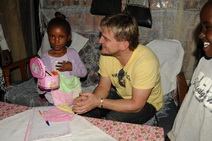 |
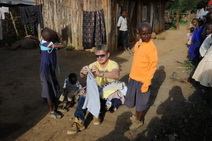 |
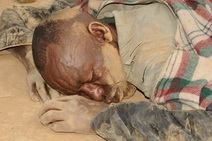 |
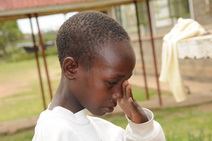 |
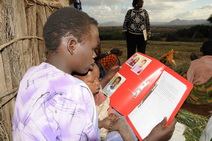 |
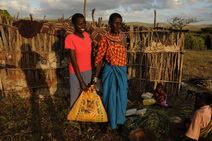 |
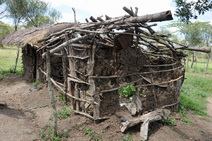 |
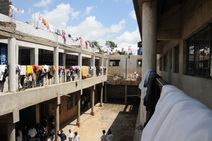 |
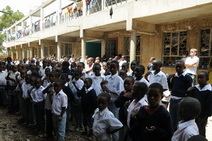 |
